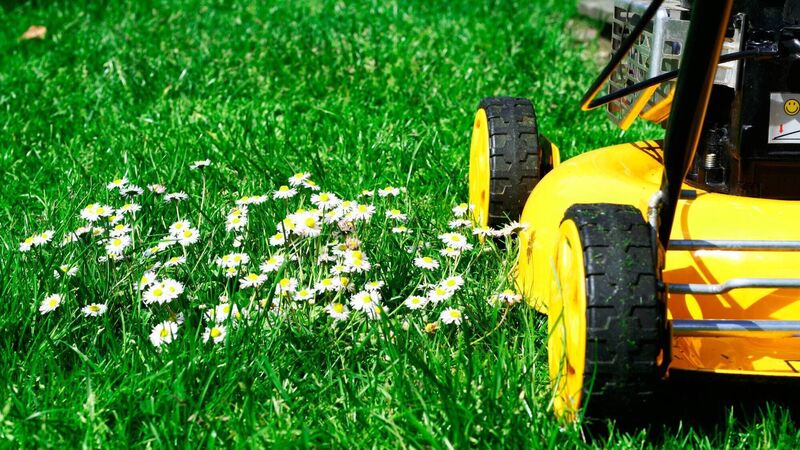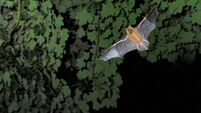Anja Murray: Each well-kept lawn is its own little war on nature

Lawns are where we rigidly reconstruct nature, stamp out diversity and impose straight lines and sharp edges.
Time to tidy up the garden? Perhaps pluck a few weeds, sweep the patio, and repair the fence? Mow the lawn?
Lawns are the main feature of most Irish gardens. A proper lawn takes a lot of work to maintain, so I am reliably informed. Conventional wisdom holds that lawn grass should be no more than three centimetres long, neatly mown, and uniform in appearance. There’s a great deal of effort involved to stop any moss from growing and generally achieving homogenous perfection, in particular making sure that no such thing as dandelions or daisies should contaminate the space.
I find it a strange thing that maintaining a manicured lawn is such standard garden practice. Gardens are places that bring us peace, where we get to enjoy the lively mix of colours, interesting textures and patterns of plants, the scent of flowers wafting about, or even the smell of rain through a tree canopy. And yet lawns are all about straight lines and uniformity.
Lawns first appeared in the 1700s, when the newly designed gardens at the Palace of Versailles in France featured a grassy lawn called ‘tapis vert’, or "green carpet". The idea of a lawn soon spread from being an eccentric novelty to a popular practice around the stately homes of medieval French and English aristocrats. Not being grazed by cattle or sheep meant that lawns had to be maintained by servants using hand tools, normally a scythe. Keeping a lawn was labour intensive and time-consuming, and so was only an option for the very wealthy. Doing all this for no purpose other than display was an ostentatious show of wealth and status.
Skip ahead 300 years, and lawns are a standard presence across gardens, parks, university grounds, civic spaces, everywhere really. We don’t question the logic of allocating so much land to something as useless as a lawn. Since the invention of mechanical lawnmowers in the 1800s, lawns at least didn’t have to be scythed by hand. But they still remain labour intensive and pointless. Like many of the trends that surged in the mid-20th century, maintaining a lawn is another way to maintain dominion over nature. Lawns are often sprayed to conformity, fertilised for the brightest green, insects abolished with pesticides. Lawns are where we rigidly reconstruct nature, stamp out diversity and impose straight lines and sharp edges. Each well-kept lawn is its own little war on nature.
Gardens are generally good for our mental health and physical wellbeing. Watching movement and texture, such as leaves swaying in the spring breeze, draws our attention and eases our nervous system. Seeing the movement of light and colour in a garden can reduce those compounds in our body that produce stress. Making more space for flowers, bees and butterflies is of course good for wildlife too. Allowing a lawn to grow tall and fill with flowers provides nectar and pollen for wild bees, colourful butterflies, night flying moths, and singing crickets. These in turn support songbirds that we love to listen to.
We curate our gardens for utility and aesthetics, cultivating flowering plants and trees to our particular preference. Choosing the colour combinations, textures and layers is a joy to most keen gardeners. And while everyone has their own particular view on what makes a beautiful garden, we seem to be conditioned toward neatness.
I have a relative in his 80s who has always been a keen gardener, keeping a neatly mown lawn and well-trimmed garden hedges in his suburban garden since the 1970s. During lockdown, he came across media reports on the decline of insects and wild bees in particular, so he decided to brave the judgement of their neighbours and leave the grass to grow a little. He didn’t mow the lawn during April and May, which took a good deal of restraint on his part! By July he was ringing me regularly to tell me about the speckled wood and peacock butterflies who now visited the garden, beautiful to watch as they flit from flower to flower. He was delighted to be able to see different bumblebees who had discovered his little garden oasis too. A garden that for decades had been kept as a relatively sterile lawn went through a total transformation. His back garden was now buzzing with movement and life, simply by letting the lawn grow a little.
There is a growing appreciation in Ireland and elsewhere that nature needs space from our controlling tendencies. Even very simple changes like reducing how often the lawn is mowed can make a big difference to wildlife. After a year or two of reduced mowing pressure, there will be colourful spotted ladybirds, shimmering shield bugs, solitary bees, bumblebees and hoverflies, all sustained by the diversity of flowering plants that are given the chance to grow from existing seedbanks in the soil. In Ireland, one-third of the 98 wild bee species here are at risk of extinction, so every wildflower counts. Grass can be kept at different heights in different parts of the garden too. Leaving a mosaic of tall meadow grasses can go side by side with shorter mown paths and play areas.
A movement called ‘No–Mow May’ encourages gardeners not to mow the lawn throughout the month of May. You could call it a peace treaty amid our relentless war on nature, at least in regard of lawns and all that they represent. The All-Ireland Pollinator Plan and associated website Pollinators.ie has wonderful advice for anyone looking to do their bit.
Parks departments of local authorities and the OPW seem to be coming around to the idea of leaving some space for nature and loosening the attachment to neatly mown lawns, though only in small swathes here and there. Tightly mown lawns still tend to dominate every inch of public green spaces. It's high time we rethink the old controlling convention of keeping a well-manicured lawn, loosen our control of nature, and let some diversity back into our lives.
- Anja Murray is an ecologist, broadcaster, regular presenter on ‘Eco Eye’ on RTÉ 1 and writes the weekly ‘Nature File’ on RTÉ Lyric FM.










